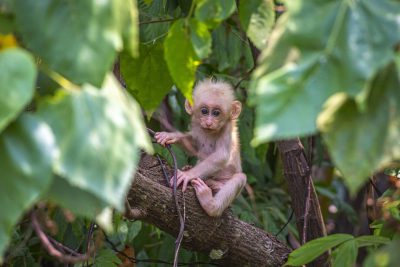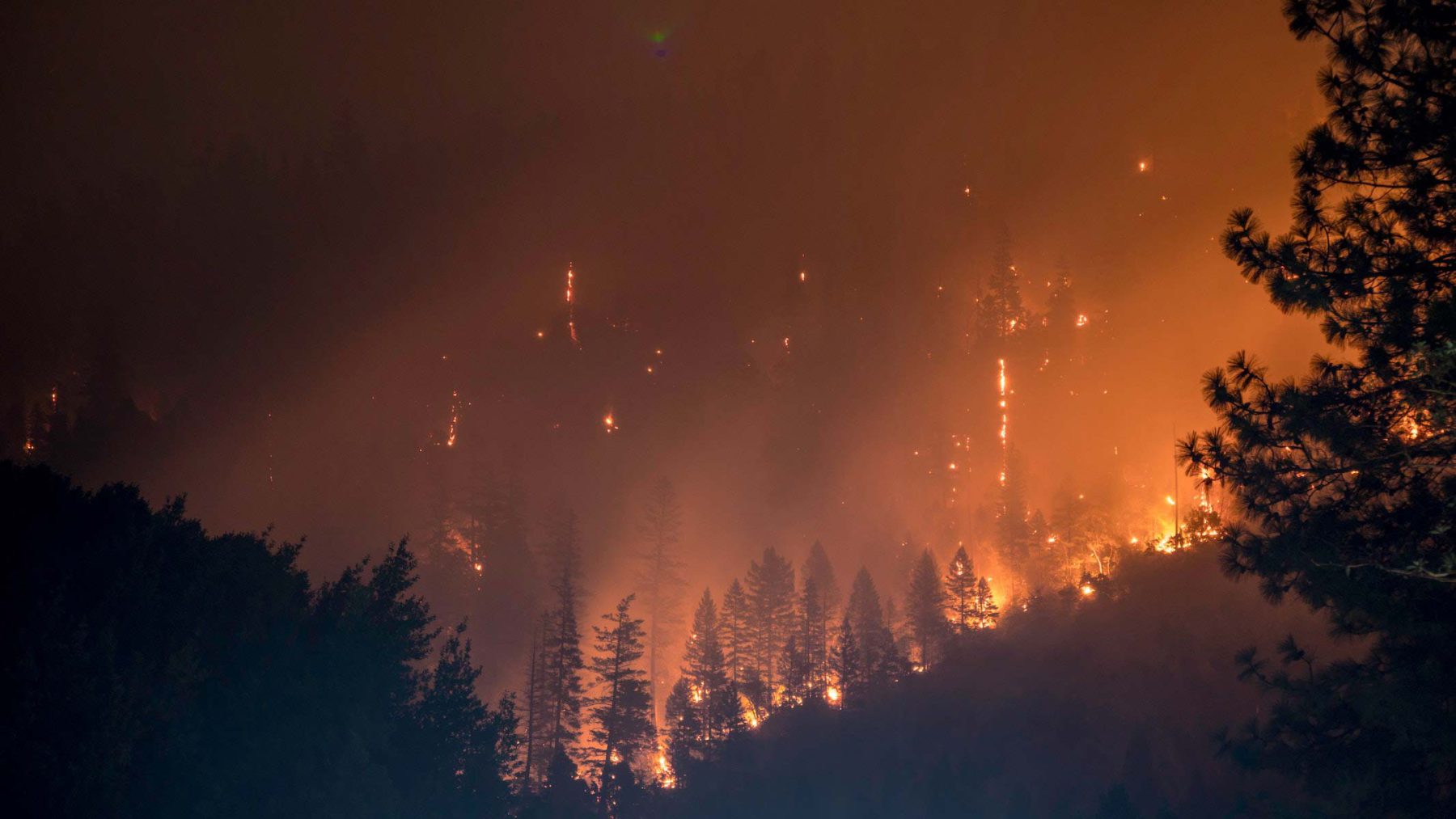Estimated reading time: 8 minutes
The Earth has lost more than half its trees since humans first started cutting them down. Today, forests cover 31 percent of our planet but they continue to be destroyed at an alarming rate. Not only does this impact the species who live within them, it affects all of us. So, who is causing this ecological damage and how can we ensure that our purchases are not funding deforestation? Read on.
Why Are Forests Important?
Forests are vital to the health of our planet. They take carbon dioxide from the atmosphere and store it away, reducing the impact of climate change. Forests like the Amazon also stabilize rainfall cycles, while trees all over the world prevent soil erosion and flooding. Plus, of course, trees and forests have an intrinsic value, and are home to thousands of species of plants and animals, as well as indigenous people.
What Is Deforestation?
It is the permanent removal of large numbers of trees to make way for something else, often grazing for farmed animals, mining, urban expansion or to use the timber in construction or other industries.
What Are The Main Causes Of Deforestation?
There are just a handful of industries responsible for this widespread destruction but they can be stopped if we stop paying them to do it.
Agriculture
Around 80 percent of global deforestation is a result of agriculture. Slash-and-burn agriculture – where farmers burn large swathes of forest, allowing the ash to fertilize the land for crops – is a big contributor to deforestation in the tropics. It is not only destructive but short-sighted as the land remains fertile for only around two years. Then, the farmers move on and destroy another area. Slash-and-burn agriculture is responsible for the loss of around 50 acres of land every hour worldwide.
Some of the plant foods most commonly grown on deforested lands include palm oil, soy, rubber, coffee, tea, and rice, though in the case of soy, it is actually animal agriculture that drives its production.
Cattle
The farming of cows (‘cattle’ ranching) is the number one cause of deforestation in virtually every Amazon country, and accounts for 80 percent of current deforestation.
Approximately 450,000 square kilometers of deforested Amazon in Brazil are now grazed by cows. Soy is often blamed for deforestation – and by extension, people who eat tofu and other soy products – but this is wrong for two reasons. One, soy is often planted only after cows have grazed on deforested lands, depleted them and moved on to newly deforested land. And two, 80 percent of Amazon soy is grown to feed farmed animals like chickens, pigs and even fish in factory farms around the world. Meat consumption drives deforestation.
The deforestation caused by farming cows is responsible for the release of 340 million tons of carbon into the atmosphere every year, equivalent to 3.4 percent of current global emissions.
Housing
The massive growth of the human population means that forests are cut down to build houses, towns and cities. Researchers at Lund University recognised the problem and concluded one of the biggest things we can do to limit our own climate impact is to have fewer children.
But what do we do about the billions of people already on the planet who need homes and food? Well, we can switch to a plant-based diet as that requires a lot less land than producing meat, and we can look at ecological solutions for housing people in decent homes while preserving natural habitats. The creation of ‘compact cities’ is one effective solution. Such cities work best where there is plenty of communal open space, an efficient public transport network, initiatives that encourage safe walking and cycling, amenities sited conveniently, and high-quality housing with a small footprint.
Logging
Vast swathes of trees are cut down for wood products – for the timber used in construction, furniture, and elsewhere, and for paper products. Logging may be ‘selective’ where just high-value trees are felled, or it may be ‘clear-cut’. Clear-cutting means all the trees are felled, leaving an area completely deforested. According to NASA, clear-cutting is much more damaging to tropical rainforests as without any trees, the soil loses its nutrients and becomes barren.
Selective logging may sound like the more benign option but the heavy equipment used damages the surrounding trees, and for every tree removed, up to 30 more can be severely damaged.
How Fast Does Deforestation Happen?
Around 2,000 years ago, Western Europe was 80 percent forest but today it is just 34 percent.
The United States had about one billion acres of forests covering about half of the country until European colonists arrived. Now it has been reduced by about 286 million acres, an area roughly the size of Colombia. About half the land in Nigeria was once covered in trees but now just 10 percent remains. The Philippines was entirely forested but 65 percent has gone. Australia has lost almost 40 percent of its forests. And Latin America has lost 37 percent of its tropical forests. It is a global problem.
We have lost so much forest already and the rate of destruction is accelerating. On average, an area of tree cover the size of the United Kingdom was lost every year between 2014 and 2018. Craig Hanson of the World Resources Institute says: “we are losing the battle on stopping deforestation.”
What Are The Effects Of Deforestation?
Deforestation has a dramatic effect on wildlife and biodiversity, soil erosion, rainfall patterns and flooding, climate change and the displacement of indigenous communities.
Climate Change
Trees take carbon from the atmosphere and lock it away. When trees are burned, this carbon returns to the atmosphere as carbon dioxide – a greenhouse gas. Not only is the stored carbon released but with the trees gone, no further carbon can be removed from the atmosphere. If the trees were cut down to make way for methane-producing cows, then the dangerous effects of deforestation multiply.
Conflicts Between Humans And Wildlife
As natural habitats are destroyed, it is inevitable that the animals who live there will be displaced. Some will try to eke out an existence closer to human habitation than either they or people would like, and this inevitably leads to conflicts. It’s not the animals’ fault, of course. We destroyed their home.
End Of Renewable Resources
Logging, in theory, can be a sustainable enterprise but all too often when trees are felled or burned, what replaces them is grassland or scrubland. A 2012 study by the Center for International Forestry Research estimated that forest products – such as Brazil nuts – generate up to 20 percent of rural income and often provide the only way for communities to access the cash economy. Since many rainforest products cannot exist without a fully functioning rainforest system, deforestation puts these renewable forest resources at risk.
Soil Erosion and Flooding
Trees soak up rainfall while anchoring soils. They release the absorbed water at regular intervals and without these slow-release sponges, rainwater flows unchecked, increasing the risk of flooding.
Without trees to stabilize soil, heavy rains may wash it away, leading to crop declines. This in turn drives additional use of fertilizer, which can cause pollution, algal blooms and aquatic dead zones, and drives further deforestation. Costa Rica loses about 860 million tons of topsoil every year, while Madagascar loses so much of its red soil to erosion that its rivers run blood-red leading astronauts to state that it looks like Madagascar is bleeding to death. Half of the topsoil on the planet has been lost in the last 150 years.
Tropical Diseases
When we cut down forests, we put ourselves in danger. The Intergovernmental Science-Policy Platform on Biodiversity and Ecosystem Services explains: “Destruction of habitat and encroachment of humans and livestock into biodiverse habitats provide new pathways for pathogens to spill over and increase transmission rates.”
Spillover of infectious diseases to people is most likely to occur in the tropics where both wildlife and pathogen diversity is higher. A number of diseases transmitted there have been linked to deforestation. The United Nations and the World Health Organization are categorical: the destruction of nature gives rise to pandemics.
Loss of Habitat
Forests are habitat. They’re home to thousands of species so when we cut down trees, we destroy someone’s home, robbing them of food, shelter and water.
On Biodiversity
With so much habitat destruction, it is no wonder that biodiversity has been hit hard in recent years. Researchers talk of ‘biological annihilation’ as humanity has wiped out 68 percent of global wild animal populations just in the last 50 years. Deforestation, especially for animal agriculture, is a key cause.
How Can We Stop Deforestation?
The only way to stop it is not to fund it, and that means lobbying governments to act against destructive businesses, while also educating ourselves about how we may be contributing to it inadvertently. The key things we can do are:
- stop eating meat, as animal agriculture is a leading driver of deforestation. We can feed the whole world using a lot less land if we eat plant-based
- buy less ‘stuff’, and if we buy wooden or paper products consider second-hand or vintage, and always ensure the wood comes from a sustainable source
- check that the coffee, tea, cocoa and other products we buy is from a sustainable source
- limit the number of children we have, as population growth drives habitat destruction
Conclusion
Deforestation is devastating for our planet and its inhabitants, and it is driven by big business and profiteering. But we don’t have to accept it as an inevitability. Each of us has the power to spend our dollar where we see fit, and those of us with a choice can spend our money wisely on products that do not cost the Earth.







